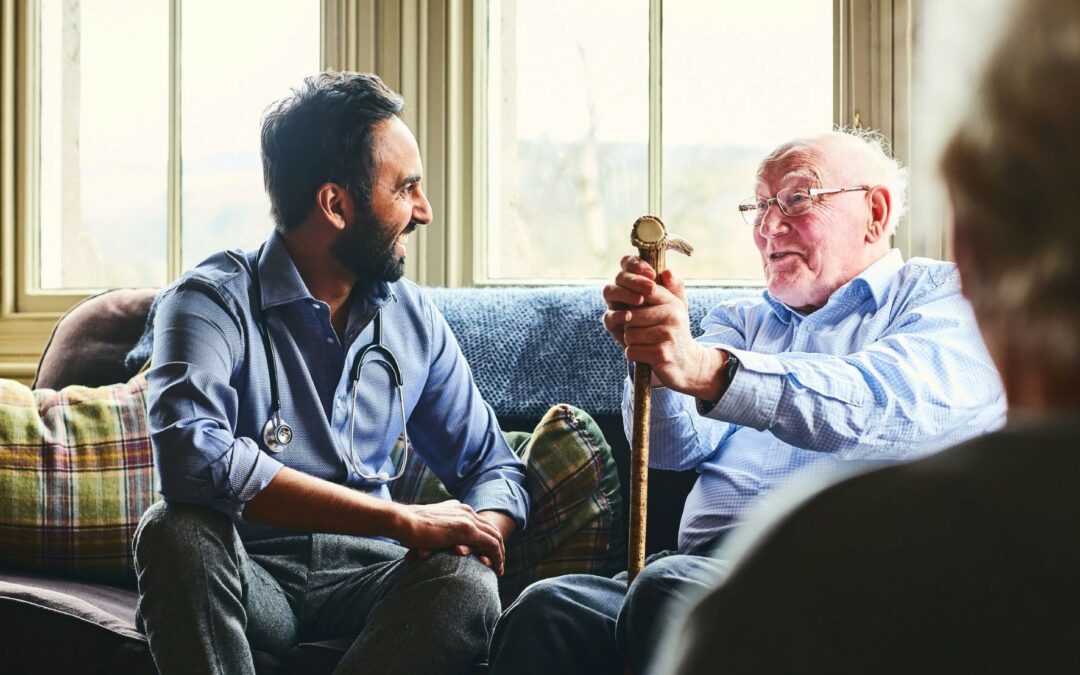Hospice care is a compassionate approach designed to support individuals with life-limiting illnesses, focusing on comfort, dignity, and quality of life. Despite its profound benefits, common misconceptions surround hospice care, often deterring patients and families from seeking this valuable service. By debunking these misconceptions, we aim to provide clarity and encourage informed decisions during challenging times.
Myth 1: Hospice is only for the final days or weeks of life.
Fact: Hospice care is intended for patients who are estimated to have six months or less to live, based on the progression of their illness. However, hospice is about more than just the final days; it provides comprehensive support that enhances the quality of life for patients over weeks and months. Many people benefit from the symptom management, emotional support, and guidance hospice provides when they begin services earlier. Unfortunately, some patients delay hospice care until their disease is so advanced that they only have a few days or weeks left, which is why this myth persists. Early hospice enrollment ensures patients, and their families receive the maximum benefits from the specialized care and support available.
Myth 2: Choosing hospice means giving up hope.
Fact: Opting for hospice care does not equate to surrendering hope but rather shifting the focus to comfort and quality of life. Hospice care prioritizes pain management, emotional and psychological support, and the ability to engage in meaningful activities with loved ones. Hope does not disappear—it simply transforms into a different kind of hope: hope for comfort, dignity, and cherished time with family. Many families who choose hospice care find peace in knowing their loved one is receiving compassionate and skilled care tailored to their needs, allowing them to focus on making the most of the time they have together.
Myth 3: Hospice care is only for cancer patients.
Fact: Hospice care is available to all terminally ill individuals and their families, regardless of diagnosis. While cancer patients do make up a significant portion of hospice recipients, many other conditions qualify as well. Some of the most common non-cancer diagnoses are congestive heart failure, dementia, chronic obstructive pulmonary disease (COPD) and lung disease, kidney disease, neurological disorders such as Parkinson’s disease or ALS, and other conditions. Any patient with a life expectancy of six months or less, as determined by a physician, can be eligible for hospice participation.
Myth 4: Hospice is a specific place.
Fact: Hospice is not a physical location but a philosophy of care. Partners In Care provides hospice services wherever the patient resides, whether it be their private home or at our inpatient facility, Hospice House. The goal of hospice is to provide comfort and support in the most familiar and comfortable setting possible. Our Hospice House in Bend offers compassionate, round-the-clock comfort care for patients facing life-limiting illnesses in a peaceful, home-like setting. Staffed by skilled hospice professionals, it offers specialized pain management, emotional support, and respite care to ensure comfort and dignity for both patients and their families. Hospice care is flexible and tailored to meet the needs of each patient and their family, wherever they may be.
Myth 5: Hospice care hastens death.
Fact: Hospice care does not speed up death. In fact, studies suggest that those who receive hospice care may live longer than those who do not because their symptoms are better managed, and they receive holistic support tailored to their needs. Hospice focuses on pain and symptom relief, helping patients feel more comfortable and less stressed. By improving quality of life and addressing emotional, physical, and spiritual needs, hospice often enables patients to maintain their well-being and live their remaining time with greater peace and dignity.
Myth 6: Once you start hospice care, you can’t stop it.
Fact: Patients have the right to revoke their benefits at any time, meaning they can determine if and when they want to stop hospice care. If a patient’s condition improves, they may even be discharged from hospice care and return to curative treatments or other palliative care plans. Some patients stabilize and exceed the six-month prognosis, at which point they may end hospice services and re-enroll later if needed. Hospice care is about providing choices and supporting the patient’s decisions throughout their illness, ensuring they receive the right care at the right time.
Myth 7: Hospice care is only for the elderly.
Fact: Hospice care is for individuals of all ages facing a life-threatening illness. Age is not a determining factor; the focus is on the patient’s medical condition and their need for compassionate end-of-life care. While older adults make up most hospice patients, younger adults and even children with terminal illnesses can receive hospice care. Pediatric hospice programs exist to support families with children facing life-limiting conditions, ensuring they receive specialized care and emotional support.
Myth 8: Hospice care is expensive.
Fact: Hospice care is covered by Medicare, Medicaid, and most private insurance plans. This hospice coverage ensures that patients receive the care they need without the added stress of financial burdens. Medicare’s hospice benefit covers all hospice-related medical expenses, including medications, equipment, and visits from a care team. Families often experience financial relief with hospice services because many costs that would otherwise be out-of-pocket are included, allowing them to focus on their loved one’s comfort rather than financial concerns.
Myth 9: Hospice care is only provided in a hospital or facility.
Fact: Hospice care can be provided at home or at an inpatient dedicated hospice facility. The goal is to ensure patients receive care in the most comfortable and familiar setting possible. Most hospice care is provided in the patient’s own home, where they can be surrounded by loved ones and familiar surroundings. Inpatient hospice facilities like our Hospice House exist for patients who need more intensive symptom management, but hospice is adaptable to each patient’s unique needs and circumstances.
Myth 10: Hospice care is only for people who have given up on life.
Fact: Hospice care is designed to help terminally ill patients live their final days to the fullest. It provides medical care and pain management as well as emotional and spiritual support tailored to the patient’s needs and desires. The goal of hospice care is to increase the patient’s quality of life and provide support for family members and caregivers. Many patients experience a greater sense of peace and fulfillment with hospice care because it enables them to focus on what matters most to them in their remaining time.
Final Thoughts: Understanding the True Purpose of Hospice Care
Hospice care is not about giving up; it is about choosing comfort, dignity, and quality of life for those facing terminal illnesses. By addressing common myths and misconceptions, we hope to encourage open conversations about care options at the end of life. When families have the right information, they can make choices that provide the best possible support for their loved ones on their final journey.
If you or a loved one is considering hospice care, reach out to us to discuss your options. Understanding the true nature of hospice can help ensure that your loved ones receive the compassionate care they deserve.

